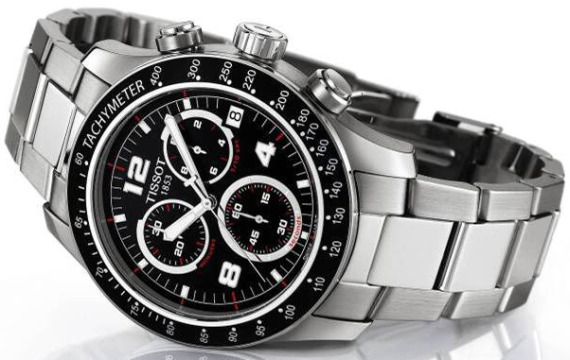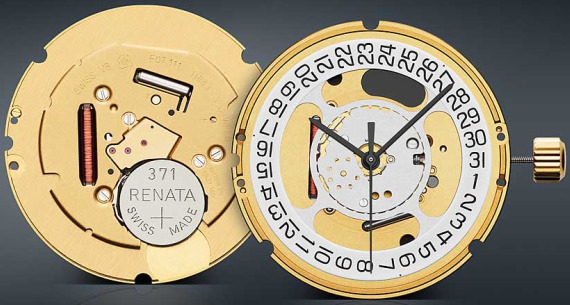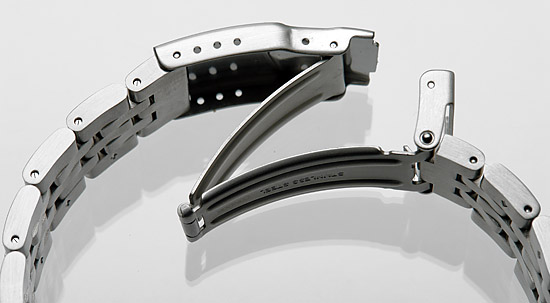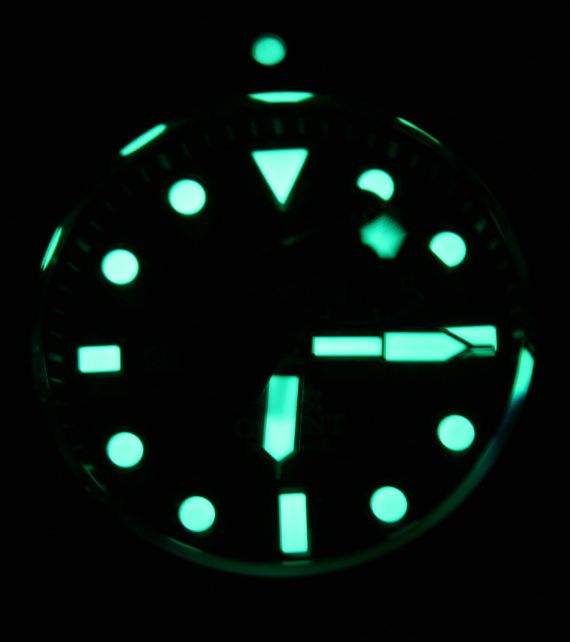
Welcome to the first of three articles that offer an overview for watch newbies on what to look for when getting a new watch. Esteemed watch expert readers are going to be familiar with much of what I am talking about, and I encourage your personal additions to the list. For others, I hope to help guide your watch purchase decisions and discuss information that many of us take for granted. Too often am I presented with questions about what watch people should buy, or what makes a watch good. I simply cannot review the hundreds of watch brands and thousands of styles with each person – what I can give people is a general overview of what to look for and ask about, given your budget.
Let me first say, these lists will not discuss complications (functions) that watches have. It doesn’t matter to me whether you are looking for a chronograph (stopwatch), perpetual calendar (does not need to be adjusted very often), GMT (24-hour hand for a second time zone), or otherwise… These three lists will mention aspects of the watch or its construction that are often function agnostic. Plus, these items are overall things to look for. There is no “perfect” watch, so just make sure the watches you are looking for satisfy as many of the items below as possible.
In “Part 1,” I will discuss features you should look for in what I call an “entry level luxury” watch. This is going to be the $300 and above price point. I will not cap it because different watches simply give you more for the money and these features are certainly things you’ll want in upper range watches as well. The next price point will be $1000 and up, and finally we will have the price point of about $20,000 and up. This latter price point will include things at the $20,000 level as well as the $200,000 level.
For $300-and-up watches:
This is a broad range of watches with probably the largest selection of watches in it. For some of you, $300 is a huge sum for a watch, while for others of you, this is a paltry amount barely worth your attention. If you are in the former category, you’ll want to listen up as these are important things to look for. Again, this is just one partial list, and there are, of course, other things that go into a good watch.
1. Sapphire Crystal
A watch crystal is the transparent cover over the face of the watch. Crystals have been made using different materials over the years, but only a few major materials dominate the market today. Most of the watches you’ll look at have one of two types of crystals; mineral glass or synthetic sapphire crystals. Mineral crystals are cheaper and offer one benefit over sapphire – they don’t tend to shatter if struck hard. Meaning they will crack, but not shatter. Shattered sapphire crystals are relatively rare and typically occur with a very harsh impact. The better the watch, the thicker the sapphire crystal will be, and thus, less likely to break. Sapphire crystals are incredibly scratch-resistant though. You often see well-worn watches with beat-up cases, but a “flawless” crystal. Thus, sapphire crystals are more desirable compared to mineral crystals and should be preferred the majority of the time.
2. Solid Metal Construction
To some people, it might be obvious to get a watch out of solid metal, but you’d be surprised at how some cheaper watches cut costs. Steel watches should be made from grade 316L stainless steel almost all the time. Plus, the watch case and bracelet links should be solid pieces of metal, rather than folded metal or anything hollow. It is easy to tell if a bracelet is solid by inspecting the side of it and noticing if looks like one solid piece. In watches at this level, cases are best made from the fewest number of pieces and using the most metal possible. This means the least (or no) amount of materials such as plastic or otherwise.
3. Swiss Movement Or Japanese Movement (if it is a Japanese watch)
Switzerland is known for making high quality watch movements – you knew that. Japan also makes good movements, but not all movements are created equally. Most of the the time, Swiss movements come from ETA – or Ronda, especially if they are quartz movements (though this is not always the case). Japanese quartz movements typically come from makers such as Seiko, Citizen, and Casio. While these countries are not the only makers of movements, at these price points try to get movements from these regions as much as possible. Plus, if a watch is not Japanese, try to find one with a Swiss movement. You generally want to stay away from Chinese movements, though, this is not always a signal of low quality. Japanese watches probably utilize Japanese movements the best, though you’ll find Japanese movements (often Miyota, which is part of Citizen) in timepieces from all over the world. Lastly, at this price point, don’t worry too much about finding mechanical watches – you are just fine with a quartz movement – even though there are plenty of mechanical movements available.

4.Solid Feeling Construction
You want your watch to feel well put together and solid. Check to see how well the strap or bracelet fits to the case. There should little to no wiggle room. Put the watch on your wrist and see how well the clasp or buckle operates, they should be smooth with a nice action. They should further not feel flimsy or poorly sized. If the watch has a rotating diver’s bezel, again, twist it around and see how much movement it gives in a resting position. A good watch should not make too much or any noise when shifting around briskly on your wrist, and it goes without saying that it should feel like it is all assembled in a tight-fitting manner. It is also the case that a lot of the time, Swiss companies (even at these lower price points), make better metal bracelets than other countries, even Japan. It is true that a Swiss designed bracelet might actually be manufactured elsewhere, but they take great pride in refinement of these areas.
5. Designed By Actual Watch Makers
Consider that two types of people are designing watches. Those that care about how well a watch functions as a timepiece, and others that just care about how they look. The best watches are designed using fundamental watch design principles that value function AND form. The alternative are “fashion” watches that might look nice, but actually have superfluous or vestigial design cues. Worst case scenario is a watch that is so poorly designed, it does not even function properly. Examples of this are missing chronograph subdials, erroneous markers on dial, inoperable measuring scales just placed for show, and my all time biggest pet peeve – hands that are too short or the wrong size. The last thing you want is your nice looking watch to function like a movie prop. So do yourself a favor and really take a good long look at the dial and all its features, figuring out what each and every function does, along with making a decision of whether it is usable given your standards. This is one of the biggest problems in the watch market today, and you’ll be proud that you took the time to find a watch that was actually designed to be a highly functional instrument.
6. Locking Deployant Clasp If On A Metal Bracelet
Cheaper watches with metal bracelets still have what is called a single locking clasp. This is the type of bracelet that literally just snaps or clicks into place. The best metal bracelets have what are know as “double or triple locking clasps.” The image below has a bracelet with a double locking clasp (deployment). The piece on the left “locks” via clicking down when it attaches to the bottom segment. That is the first “lock.” The second is the little metal flap that “locks” again over the first piece to secure it being closed. A triple lock often features a push-button in the mix, or there are also “double locking clasps” with a push button instead of a fold over flap. The bottom line is that you want a watch bracelet that will stay secure on your wrist no matter what you are doing or if you accidentally hit the bracelet on something.

7. Weight
Watch weight is a polarizing concept. Some people (like myself) love heavy watches. Others want something very light. On more expensive watches, you start to see materials such as titanium which are lighter than steel, but in this price segment, weight is often times a sign of quality. Even though titanium is available at this price level, it most likely is not the higher (grade 5) quality titanium that is what you’ll want. At this price level, you are only going to get that nice crisp quality look with steel. Like I said, weight often signifies solid construction using a high quality steel. So feel the weight of a case and bracelet to make sure it is substantial enough to justify your investment.
8. Signed Crown And Buckle Or Clasp
A good watch maker is more often than not a proud watch maker, and is fully invested in each watch they design. This means there are typically four places that you’ll watch to see the name of the watch makers. This is on the face of the watch, the caseback, on the crown, and on the deployant clasp or strap buckle. These are also known as “signed crowns or buckles/deployant clasps.” The manner of “signing” can vary, but at this price level are usually some type of light laser engraving. Higher priced watches have logos and graphics done in relief (raised, versus etched into the metal). Cheaper watches have bare crowns and deployants which make it too clear that these parts are taken from a parts bin and have no personal touch.
9. Good Dial Lumination
Not all watches are expected to have dials that illuminate in the dark for low light viewing – these are typically the more classic or formal watches. However, almost all sport and causal watches have some type of luminant that is applied on the hands as well as somewhere on the dial. The quality of luminant greatly varies. Some is so impractical that it should not even be there. An example being that you need to shine a bright light directly to the face of the watch for a minute or so, and then the dial dimly glows for a few minutes. Alternatively, you have luminant that charges easily when exposed to room or sun light and glows for hours. The Japanese tend to make the best luminant, but you get Japanese luminant on watches from all over (watches will never indicate the source of the luminant, but look for LumiNova, or better yet SuperLumiNova when possible). An alternative to luminant are watches that use tritium gas tubes. These tubes are made by just one company in Switzerland and glow by themselves for about 25-30 years. Tritium gas tubes are not tough to find, as a few watch brands almost exclusively use them, and they can be had for reasonable prices. Still, most watches will have applied luminant. Look for large surface areas of luminant that is applied richly (looks raised up a bit).

10. Consistent Pricing
One figure attached to new watches that doesn’t tend to mean a lot is the retail price. Why? Because you are a sucker for paying retail price most of the time. After those of you from the watch companies stop cursing me, let me explain a bit. Retail prices are just a number set so that even authorized retailers can show to the consumer that they are giving you a discount. It is true that some watches are discounted only a bit or not at all, but the vast majority of watches, especially at these prices levels, are sold below retail prices. That is good to know, but not my final point. Due to the fact that prices are often below retail, you want to pay the “actual,” consistent street price. Let’s say, for example, a watch has a retail price of $500, but most retailers actually sell it for $400. You want to make sure you shop around to pay $400 as opposed to $450. Here is the kicker, though, when it comes to assessing value of an entry level luxury watch: If a watch is being sold by authorized dealers for $400, but the unauthorized dealers (everyone else) is charging $250, then you know there is something wrong with the value of the watch. This is what I call “inconsistent pricing.” What you want to look for is consistency among retailers so that prices don’t vary wildly from seller-to-seller.
Top Things To Look For In A Luxury Watch Part 2: Medium Range Luxury
Top Things To Look For In A Luxury Watch Part 3: High End Luxury
